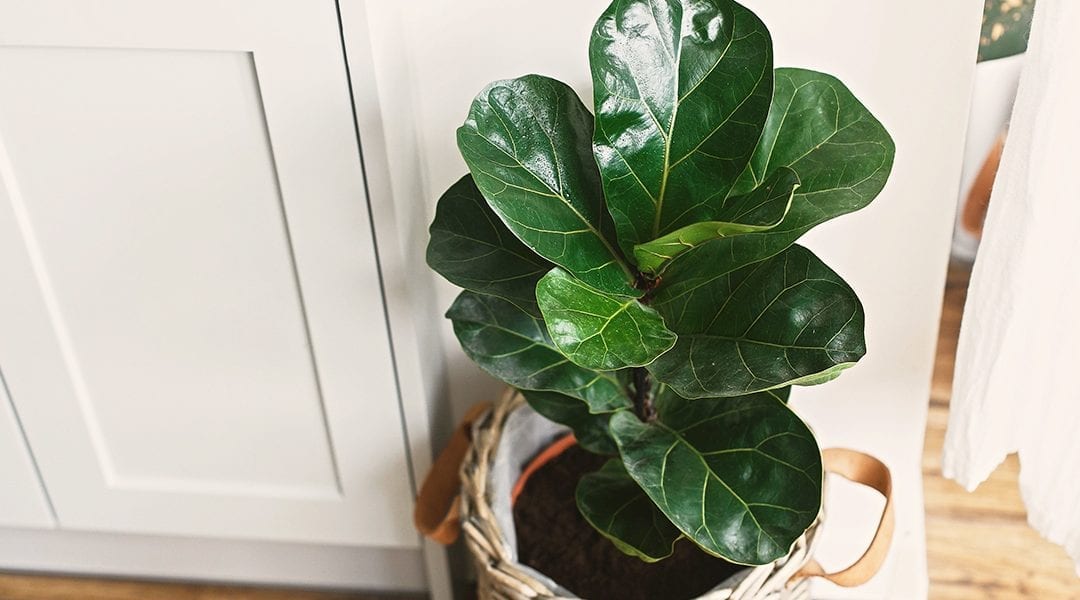The Fiddle Leaf Fig has become a celebrated houseplant of recent years, but it’s only one of many attractive ficus plants that you can grow indoors. In the tropics, these trees grow into broad, luxurious canopies with vining branches and gnarly trunks. In your home, ficuses are small trees with elegant bark and lush leaves. While some types require fine-tuning to get the conditions just right, they are perfectly suited to beginner and seasoned growers. Here are five ficuses you’ll fall in love with!
They have a reputation for being finicky, but once you pinpoint the proper sunlight, humidity, and water levels, they’re relatively low-maintenance.
Ficus lyrata (Fiddle Leaf Fig)
Featuring large, violin-shaped leaves with prominent veins, the Fiddle Leaf Fig has become one of the most popular houseplants of the past few years. Originating in the tropics of Africa, they enjoy wet, humid, and warm conditions. However, if you can’t duplicate a tropical jungle in your living room, they’ll still grow for a long time, as long as you’re mindful of their water and sunlight needs.
Water: The right amount of water is important for this plant. Water once the top inch of soil feels dry. Leaves with brown tips are a sign of overwatering, while fully yellow or brown, crispy leaves indicate under watering.
Sunlight: Keep in bright, indirect light.
Additional Information:
Fiddle Leaf Fig Care 101
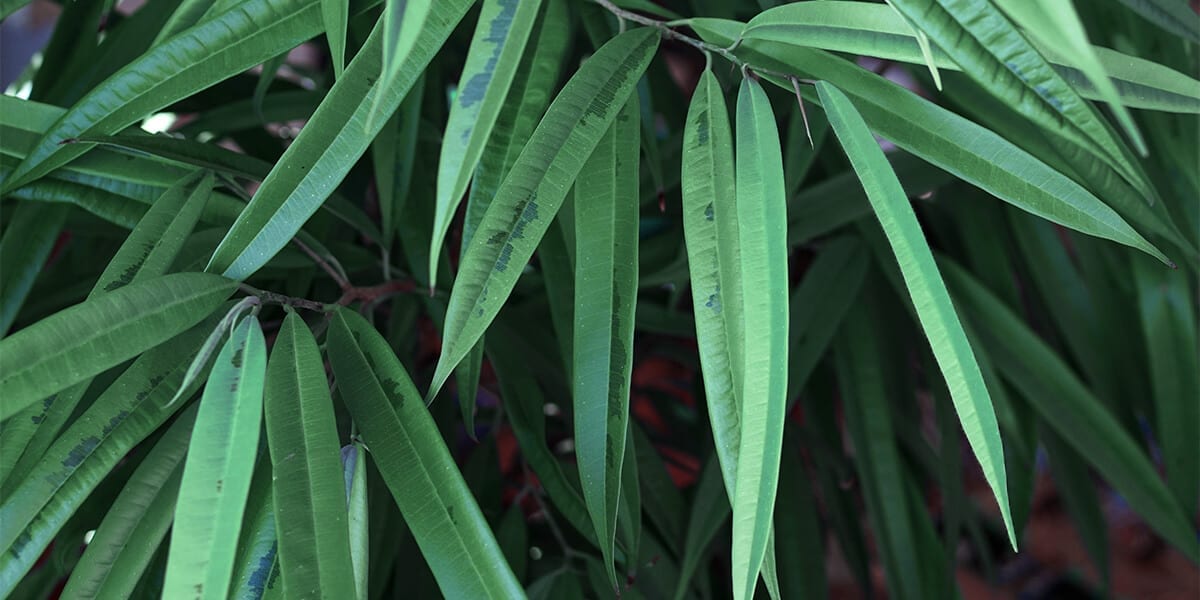
Ficus alii (Banana Leaf Fig)
Commonly called the Banana Leaf Fig, this ficus features long, slender leaves like a banana tree. The bushy look gives it a more casual feel than the Fiddle Leaf, and coincidentally, it’s also less finicky than other types of ficus plants. But, originating in Southeast Asia, it still enjoys tropical conditions like the other members of the fig family.
Water: Let the top 1-2 inches of soil dry out in between waterings.
Sunlight: Keep in bright, indirect light.
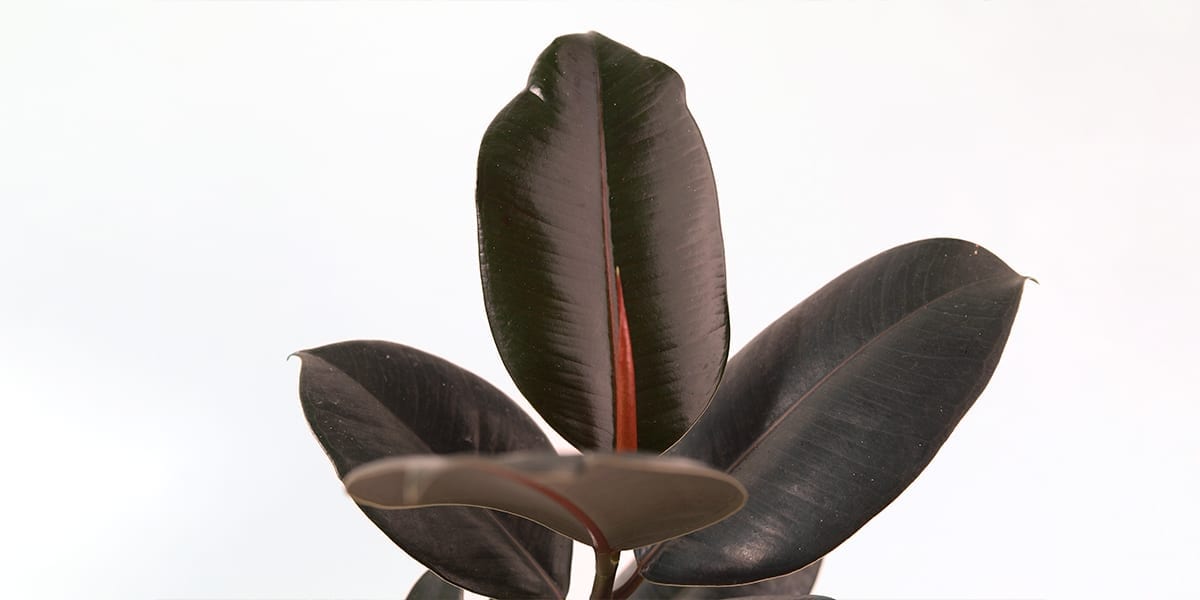
Ficus elastica (Rubber Plant)
This tree is famous for its white sap that contains latex, a valuable substance in many industrial applications. As a houseplant, its rich burgundy leaves are the main appeal. In its native jungles of Southeast Asia, it may reach heights of 200 feet, but like other types of ficus plants, this variety only grows 6-10 feet tall indoors, a perfect height for any floor space.
Water: Allow the soil to dry halfway down the pot in between waterings. Yellow, dropping leaves is a sign of overwatering.
Sunlight: These trees need bright, indirect light but are more tolerant of lower light than other types of ficus plants. The leaves may turn green if they are not receiving enough rays.
Ficus benghalensis (Ficus Audrey)
The Ficus Audrey is the highly revered and prized national tree of India. As a houseplant, it rivals the elegance of the Fiddle Leaf Fig. But instead of large violin-shaped leaves, it features smaller emerald leaves with prominent white veins. This tree can be trained to grow in a graceful pole-like shape with leaves all along the trunk. It can also grow in a typical tree form with multiple branches and a bushy crown on top.
Water: Let the top 2-3 inches of soil dry out before watering.
Sunlight: High levels of bright, indirect light or direct sunlight.
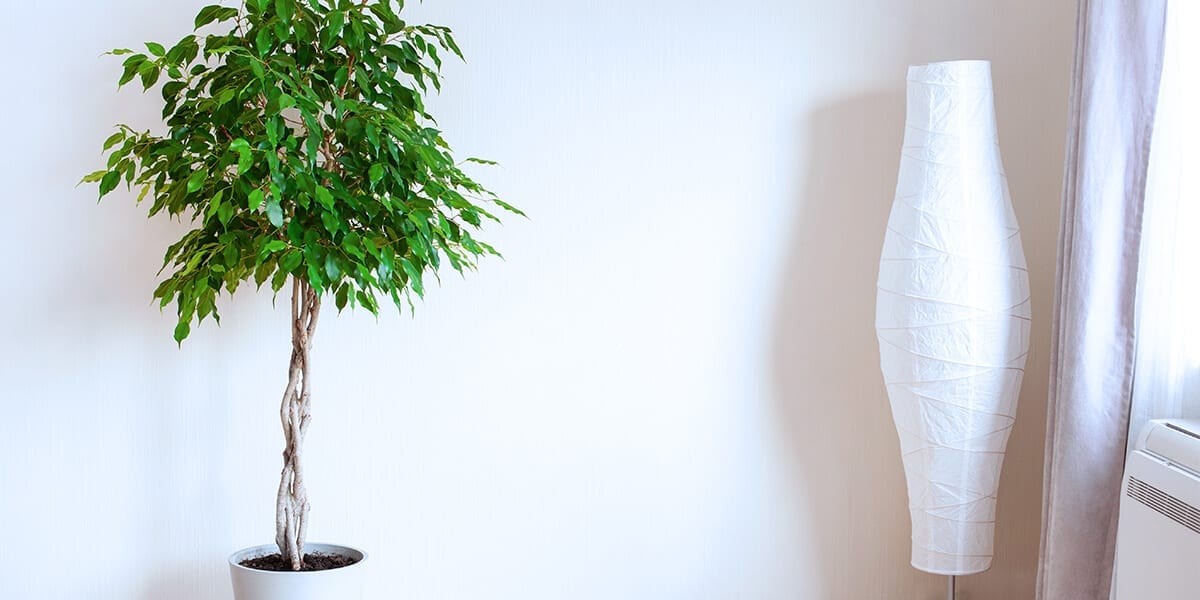
Ficus daniella (Ficus Danielle)
The braided trunk is the hallmark of the Ficus daniella. Its bright green crown has all of the elegance of the other figs, including the ability to filter and purify air. In the jungle, it grows into a majestic tree of 90 feet or higher. Inside your home, it gives you all of this luxuriant personality, but at a more manageable size of 6-10 feet.
Water: Water thoroughly once the top 1-2 inches of soil are dry.
Sunlight: Bright, indirect light.
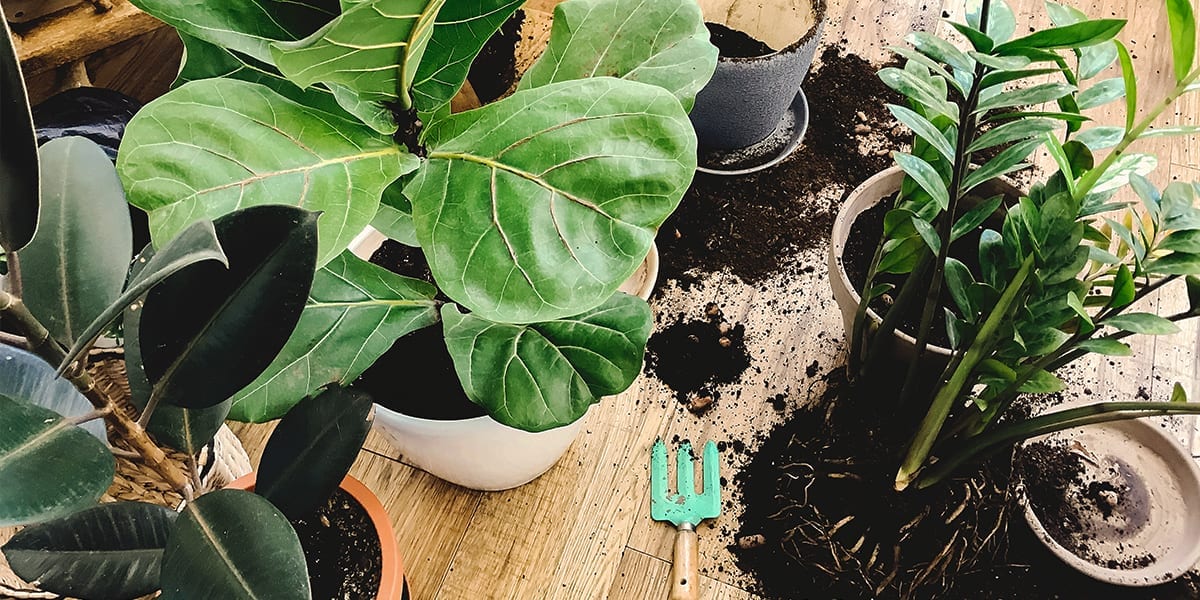
Extra Care Tips for Your Ficus Plants
Ficus plants often benefit from extra plant care, especially in the first months after you move them into your home. Here are ways to treat them well:
- Rotate the plants every 1-2 weeks so that each side of the plant gets equal access to sunlight. This will prevent them from growing towards the window.
- Dust the leaves every 1-2 weeks to keep them looking their best and to help the leaves absorb sunlight.
- As ficus plants are sensitive, changes in temperature or location may cause them to become stressed and lose leaves. Keep them away from drafts and heat sources, and once you find the ideal spot, avoid moving them.
- Pick off any dead leaves throughout the year as they can harbor pests.
Ficus plants make beautiful additions to your home. They have a reputation for being finicky, but once you pinpoint the proper sunlight, humidity, and water levels, they’re relatively low-maintenance. These indoor trees will not produce any figs, but all of them stand out by their elegant trunks and lush leaves alone.
To find your favorite fig, visit our garden centers in Carpentersville and Bloomingdale!
Platt Hill Nursery is Chicago’s premier garden center and nursery.
Additional Information:
Terracotta vs. Ceramic Pots: Which is Better for Your Houseplants?
Fiddle Leaf Fig Care 101

